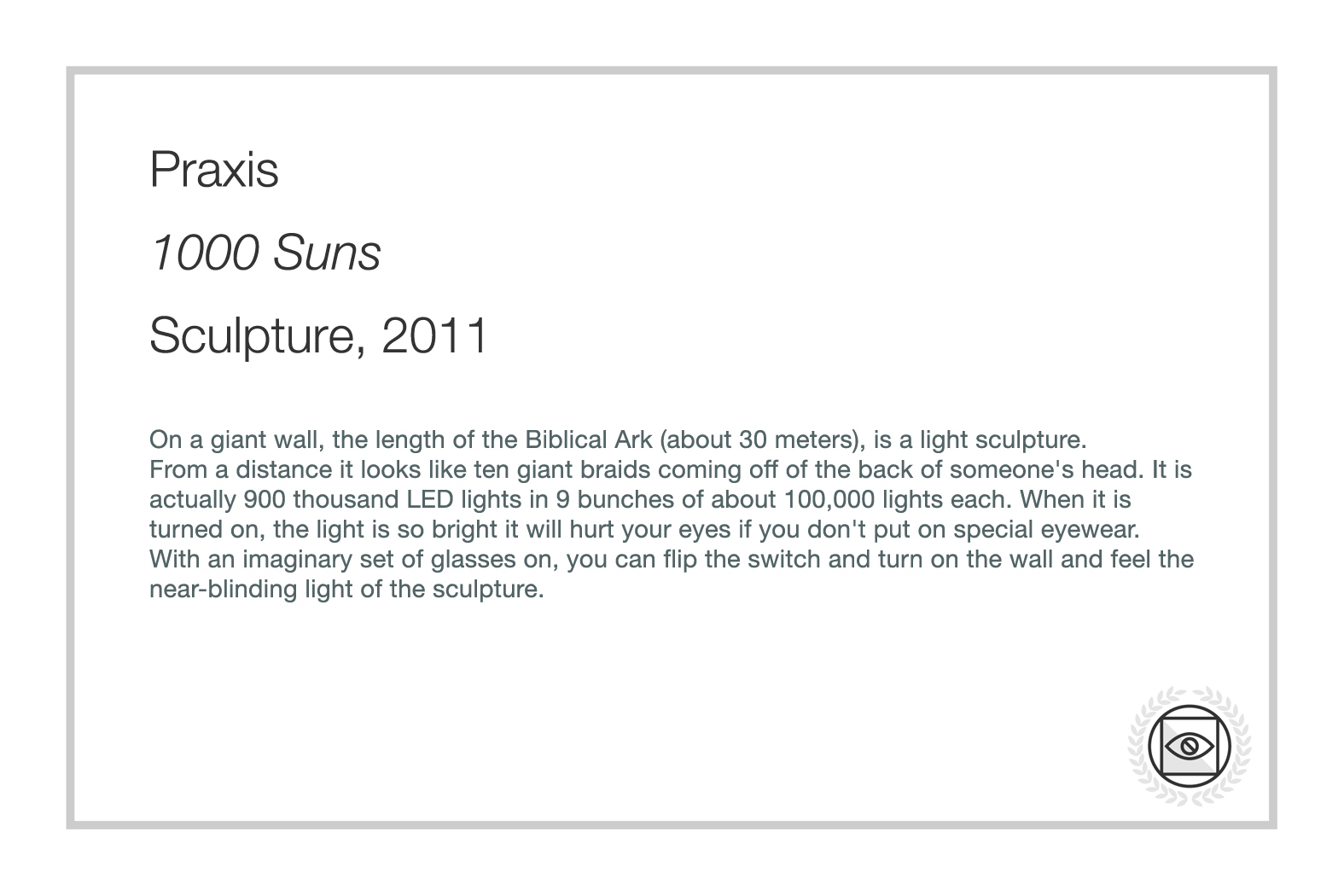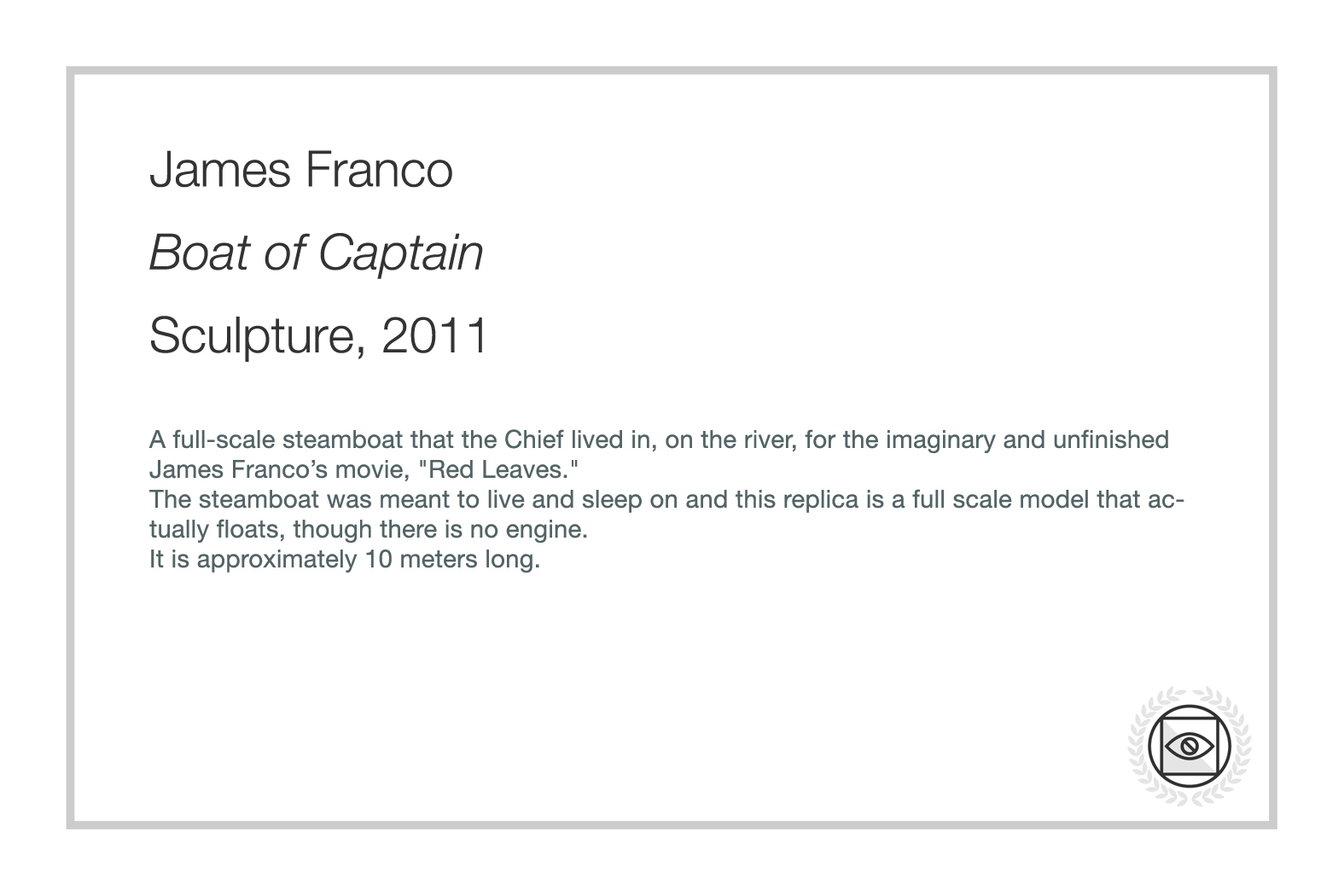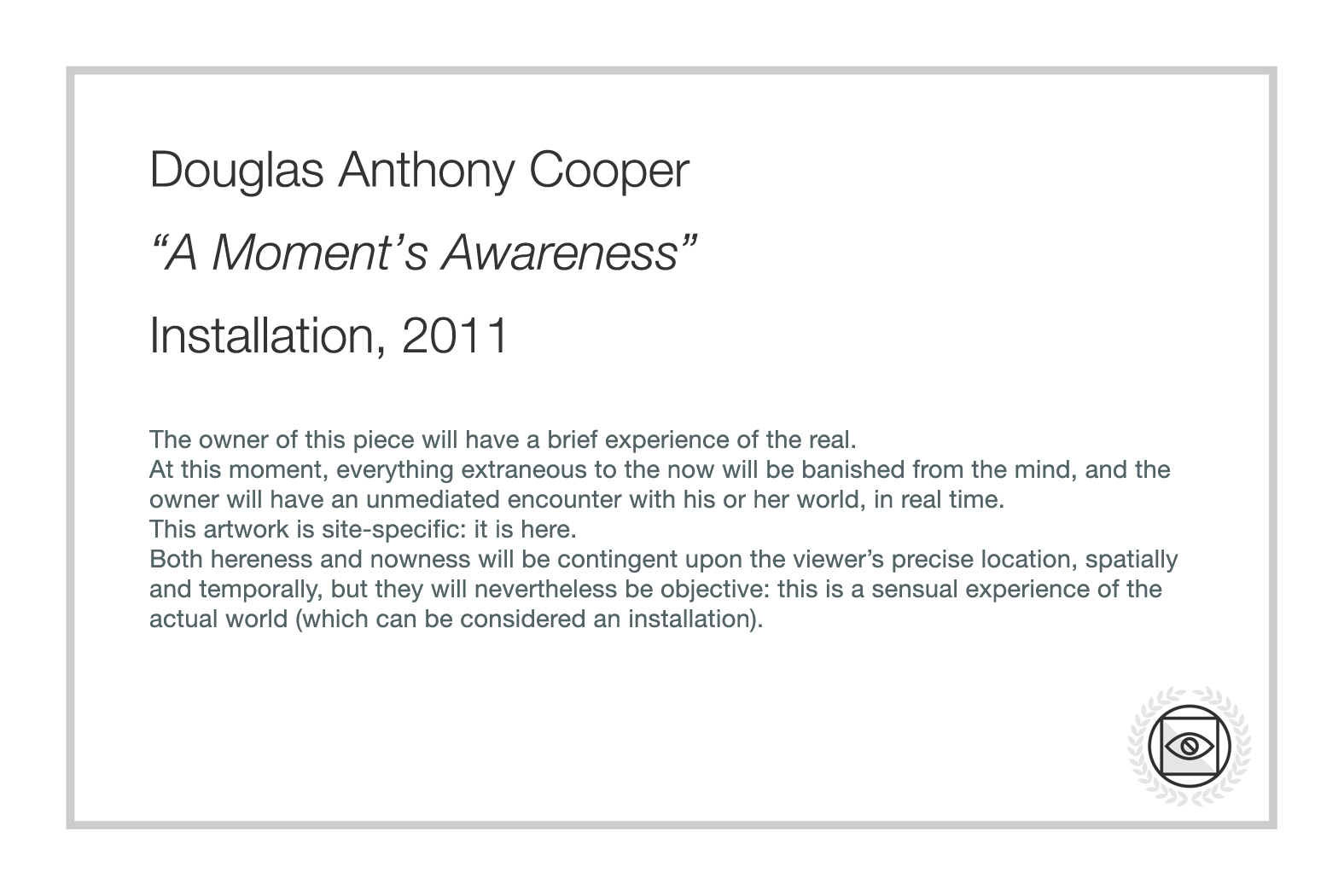The Museum of Non-visible Art
Composed entirely of ideas, the work that the
Museum of Non-Visible Art showcases remains unseen.
Although the artworks themselves are not visible,
the descriptions are readable, and open our eyes to
a parallel world built of images and words.
This world is not visible, but it exists, as surely as thought itself exists.
The Manifesto of MONA explains everything else about the why and how.
-
Our history
-
The idea for this institution came from an artist collaborative called Praxis (Brainard and Delia Carey). Praxis is a husband and wife team known for performance and installation work, such as the giving out of hugs and foot-washing at museums and galleries and immersive installations. They live in New York and New Haven, U.S.. Note- Praxis did a kickstarter project in 2011 to support the museum with actor James Franco which was successful and helped the idea get international attention. That campaign is here - https://goo.gl/ZSNUJZ
The Museum of Non-Visible Art is an artist project that will become an actual museum, an institution run by the founders. This is roughly how it will operate;
The museum will be set up like a traditional art museum with an educational department and a curatorial department, as well as administrative offices for capital project planning.
-
Arts of Global Africa
Decorative Art
Decorative Art
American Art
Gardens
Gardens
Arts of Canada Arts of Asia
War History
War History
Classical Art
Kings of History
Kings of History
German Arts
German Arts
GALLERY
Have you heard the story of the architect from Shiraz who designed the world’s most beautiful mosque? No one had ever conjured up such a design. It was breathtakingly daring yet well-proportioned, divinely sophisticated, yet radiating a distinctly human warmth. Those who saw the plans were awe-struck.
Famous builders begged the architect to allow them to erect the mosque; wealthy people came from afar to buy the plans; thieves devised schemes to steal them; powerful rulers considered taking them by force. Yet the architect locked himself in his study, and after staring at the plans for three days and three nights, burned them all.
The architect couldn’t stand the thought that the realized building would have been subject to the forces of degradation and decay, eventual collapse or destruction by barbarian hordes. During those days and nights in his study he saw his creation profaned and reduced to dust, and was terribly unsettled by the sight.
Better that it remain perfect. Better that it was never built.
The story is a fable, but its main idea — that a thing’s ideal state is before it comes into existence, that it is better to not be born — is equal parts terrifying and uncanny. – C.B.












































